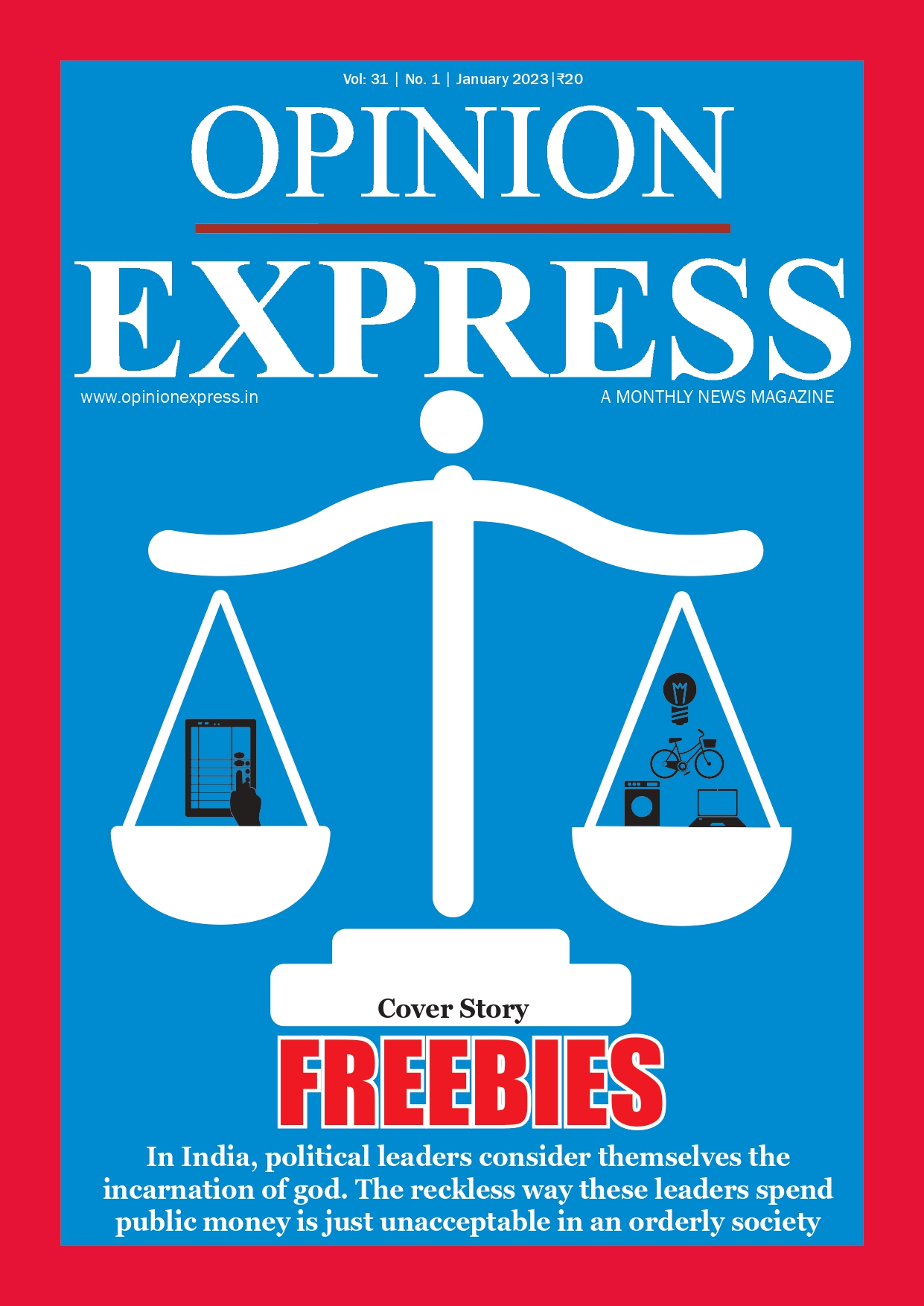How many of our readers consider Yoga practice a possible means of prevention and treatment for the many non-communicable diseases from which they and their relatives may happen to suffer?
Many of us may be aware of the potential of Yoga to treat such conditions, although most may feel it preferable to visit their general practitioner and obtain a prescription for medication. How many of us see Yoga as a path to peace within themselves, and for humanity at large? We all want relief from the aches and pains that challenge us as we grow older, and the troubles we read about in newspapers, including this one. Most of us will reach for our bottle(s) of pills without giving the matter another thought.
What we are neglecting when we do so, however, is that those pills will only treat the surface level of our problems. The roots will remain and continue to impact our quality of life. So will the wider problems that concern us every day. The advantages of Yoga and other systems of India’s AYUSH systems of medicine are that, in contrast to modern medicine, they attack the root causes. Most probably, the roots include some kind of stress, incurred in any number of ways. We have all heard of problems caused by stress, but most of us probably do not realise how simple it is to begin to reduce that stress, nor the magnitude of the advantages of doing so. Enter Yoga, the ancient system of Vedic knowledge dating back to the times of the Saptarishis, long before Lord Krishna restored harmony and peace to Bharata (to use its Sanskrit form). While Yoga is well recognised as the system used by Sanyasis to obtain spiritual liberation, Moksha, few of us may know that in Vedic times it was recognized by Ayurveda as the preferred system to treat mental illness.
Today, scientific research has shown that one technique of meditation reduces hospitalisation for mental diseases by 85 per cent. Science is the language of our age, and so doctors and medical scientists like myself prefer to make their recommendations on the basis of quality research. Two of the most highly researched meditation techniques are Mindfulness-Based Stress Reduction (MBSR) and the Transcendental Meditation Technique of HH Maharishi Mahesh Yogi (often known in India simply as Mahesh Yogi). The advantages of the latter for heart disease (and other diseases caused by stress) are such that, in 2013, the American Heart Association published a statement in Hypertension, a top scientific journal, stating that the evidence was good enough for US General Practitioners to recommend it to patients. This statement was based on over four decades of research on many aspects of the technique and was unprecedented, taken as an insult by the drug companies!
India’s leading university teaching Yoga, the Swami Yogananda Anusandhana Samsthana (SVYASA) in Bangalore, also teaches a form of meditation, consisting of deep relaxation techniques, for which it has demonstrated excellent health benefits. S-VYASA is funded by the Government of India to accept foreign students to take rigorous, nationally accredited courses to become teachers of Yoga. These then return to their native lands to spread practice of Yoga, knowledge of its benefits, and also aspects of Vedic wisdom. India’s massive store of ancient knowledge is alive and well and slowly being disseminated among the world population.
Enabling India to bring the benefits of Yoga to its own population is even accepted by the Chinese Communist Party (CCP) as a justifiable means to improve the health of China’s population, decrease the costs of maintaining its retired citizens, and improve their quality of life. The CCP has agreed on a plan for qualified teachers of Yoga from S-VYASA to teach Yoga teacher training courses in its western city of Kunming (some failed to be remunerated).
This highly significant program promising cooperation between the world’s two most populous nations has now been expanded to include the cities of Chengdu, Shenzhen, Zhenjiang, Guangzhou, Beijing, and Shanghai. In the first named, the famous Bihar School of Yoga founded by Swami Sivananda has been taking the lead. Swami Adi Parashaktiananda is reported to have been leading that particular initiative in recent years. This past weekend, it was very heartening to hear that during the 11th celebration of the International Day of Yoga (IDY) over the summer solstice, Prime Minister Narendra Modi led the world’s largest ever community practice of Yoga consisting of 3 lakh (not 3,000, 3 lakh!) at Visakhapatnam in Andhra Pradesh. I myself was privileged to have been taken by S-VYASA Vice-Chancellor, Dr. H.R. Nagendra (now Chancellor) to the very first IDY, conceived by the Portuguese Confederation of Yoga, and held in Portugal’s capital city of Lisbon on 21st June, 2013, two years before being adopted by the Government of India.
I myself was privileged to have been taken by S-VYASA Vice-Chancellor, Dr. H.R. Nagendra (now Chancellor) to the very first IDY, conceived by the Portuguese Confederation of Yoga, and held in Portugal’s capital city of Lisbon on 21st June, 2013, two years before being adopted by the Government of India.
PM Narendra Modi’s eloquent speech in his first address to the United Nations after becoming India’s Hon’ble Prime Minister is well remembered. He advocated that the UN adopt the concept of the International Day of Yoga as a means to improve the health and happiness of the world population and promote harmony and peace throughout our planet. He promoted the vision of ‘Vasudeva Kutumbakam’ to make our world a safer place in the long-term, a theme that he emphasized in the form, “One World, One Family, One Future”, during India’s Chairmanship of the G20 group of countries in 2023.
In these profound ways, both the practice and philosophy of Yoga is being seen in a more and more serious and relevant fashion around the world. Even the Islamic world is inclined to take it seriously. Research papers on Yoga applications are frequently published by scientists from Islamic nations, particularly Iran. Yoga seems to have become a platform on which all the world’s nations can agree and participate despite the problems that may divide them on levels of doctrine and beliefs.
In this context, it is significant that the world’s greatest spiritual personalities see no differences between the goals that they seek. Outward forms may differ, but underlying unity characterizes the highest goal, the vision of oneness and unity that underlies all things. This message of ancient wisdom is found in the writings of India’s major religious groupings, Hindus, Buddhists, Jains, Parsis, Sikhs, and yes, even adherents to Islam and Christianity. Avatars and/or great saints have emerged from all these religious groupings. Sri Madhukarnath also known as Sri M recounted towards the end of his classic, ‘Apprenticed to a Himalayan Master’, how on his pilgrimage to Mt Kailas, he was granted a vision of the many founders of these groupings seated together in harmony to guide our planet earth through the challenging times we now face on our journey to what will hopefully become a state of Heaven on Earth, Ramraj.
Attaining that global goal will only be possible as the knowledge and practice of Yoga become widely enough known and experienced to create peace. In that regard, the value of group practice of meditation by large groups of many thousands will be described in a future article, as will the differing effects of the many approaches to Yoga meditation.
In his famous speech to the World Congress of Religions in 1893, Swami Vivekananda spoke of the practical value of Yoga to religion, and how that brings a unifying element to resolve the seeming differences between different cultures, and between science and religion. He predicted that, in our 21st century, advances in science would enable the seemingly unbridgeable gulf between science and religion to be closed; and that the outcome would be a world at peace with itself, where differences would be seen to enrich the tapestry of humanity’s varying traditions; where ‘The Peace that Passeth Understanding’ (as described in Christianity), the Shalom of Judaism, the Salaam of Islam, and Mahatma Gandhi’s beloved principle of Ahimsa, the first of the six Yamas of Yoga’s first limb would guide us all to state of cooperation and collaboration, where our world would truly be One Family, Om Shanti, Shanti, Shanti!
(The author is a MA (Cantab) PhD (MIT) DSc (Hon Causa) Professor Emeritus of Biology, MIT World Peace University)








 OpinionExpress.In
OpinionExpress.In















Comments (0)